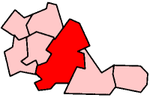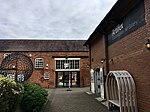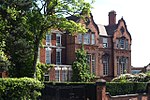Roughley is an electoral ward within the Royal Town of Sutton Coldfield, and is the most northerly part of the administrative area covered by the Royal Sutton Coldfield Town Council and the City of Birmingham.
Over half of Roughley Ward is attractive Green Belt countryside, including arable and dairy farms, historic field boundaries survive with mature hedgerows and woodlands. Several public footpaths provide access to the countryside and the one linking Hillwood Road and Dale Farm provides distant views of Lichfield Cathedral and on a clear day the Pennine Hills.
Roughley was historically part of the county of Warwickshire and is now within the West Midlands. It includes parts of the old parishes of Hill and Canwell, and before May 2018 most of the area was within Four Oaks Ward.
Local facilities within Roughley include the Mitchell Centre with independent shops, an art gallery, and bistro, all in premises converted from agricultural buildings, and nearby is the Chase Farm Shop with links to the farmer and butcher, Walter Smith.
Roughley Ward includes the Moor Hall Estate, containing Moor Hall Farm House, (listed grade II*), dating from the late fourteenth century, which was the birthplace of John Vesey, Bishop of Exeter (born circa 1462), who became the great benefactor of Sutton Coldfield through his connections with King Henry VIII. The estate also includes Moor Hall Hotel upon the site of the former mansion built by John Vesey for his own occupation, and there is also a golf course and exclusive housing.
John Vesey built 51 stone houses for the people of Sutton Coldfield in the sixteenth century and surviving houses within Roughley Ward include Vesey Grange (grade II* listed), on Weeford Road, and Vesey Cottage, (grade II* listed), upon the land of Wheatmoor Farm, accessed off Withyhill Road.
Other notable buildings include Ashfurlong Hall, (grade II* listed), Tamworth Road, a manor house dating mainly from the late eighteenth century, but incorporating earlier sixteenth century buildings.
Roughley Ward includes the Harvest Fields development, built by Barratt Homes and Crest Nicholson at the start of the twenty-first century, with several hundred homes arranged around a small park containing a community centre and nursery school, together with an access to Little Sutton Primary School.








